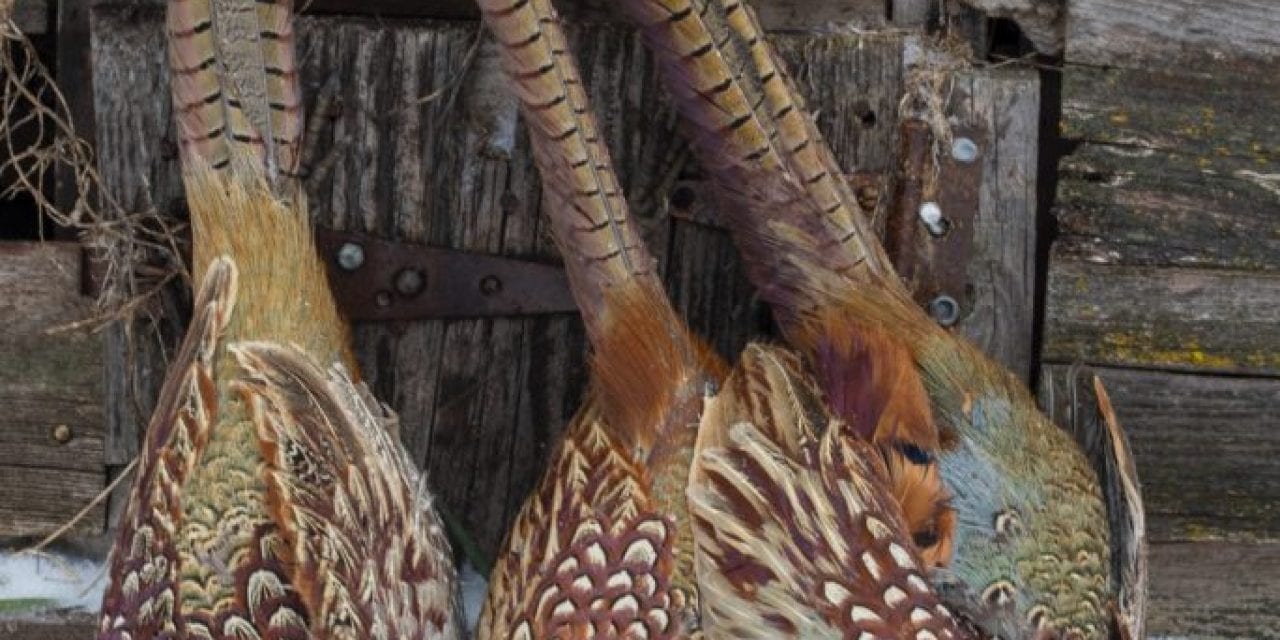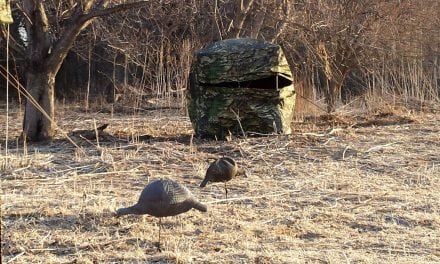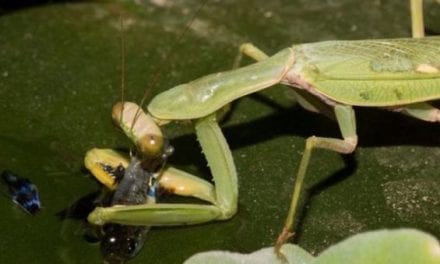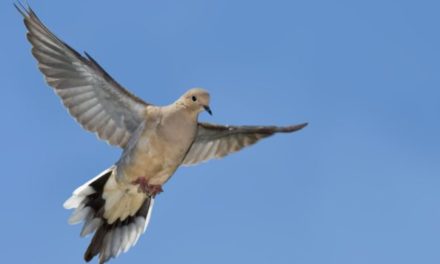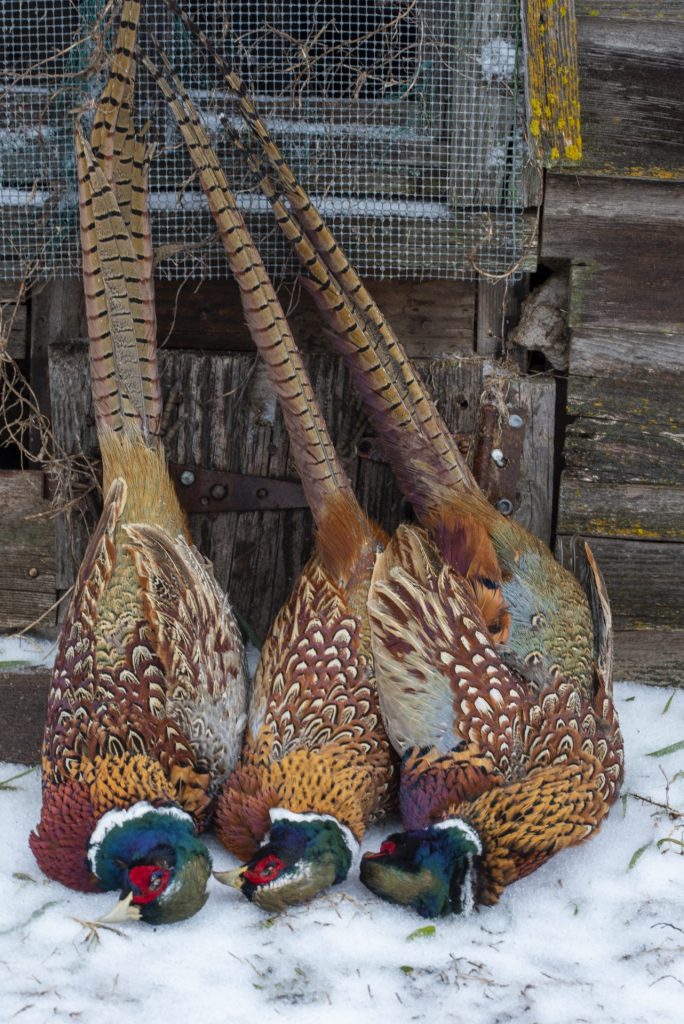
Story and Photos by Gerry Steinauer
Nothing beats hunting a frozen-over, snow-covered marsh for wily rooster pheasants in the dead of winter. At this time, pheasants are concentrated in the marshes’ thick cover, and tracking birds in fresh snow is almost a guarantee for success.
Wetlands occupy about 1.9 million acres in Nebraska, or about 4 percent of the state’s area. Major complexes include the Rainwater Basin wetlands in south-central Nebraska, the expansive wet meadows and marshes of the Sandhills, the salt marshes around Lincoln and riverbottom marshes scattered throughout the state. Though limited in extent, wetlands provide critical winter cover and food for pheasants and other wildlife. In heavily-farmed regions, they provide much of the last remaining habitat on the landscape.
Rainwater Basin Marsh Hunt
On a late January afternoon last year, I met Bob Meduna at the Sacramento-Wilcox Wildlife Management Area to chase late-season roosters. Sac-Wilcox is located a hop, skip and a jump from Meduna’s home in Phelps County. Though the Rainwater Basin marsh had been heavily hunted during the season, he promised me it still held birds.
While still in the parking lot readying ourselves for the hunt, Meduna stepped close and said, “Now here’s the rules. No talking except in whispers.” He then explained the importance of stealth when pheasant hunting and how even the noise of a shutting car door or talking can send keen-eared pheasants running. Those are the birds that less cautious hunters would never see.
After a pause in the conversation I asked, “What are the other rules?”
“Don’t miss,” he responded.
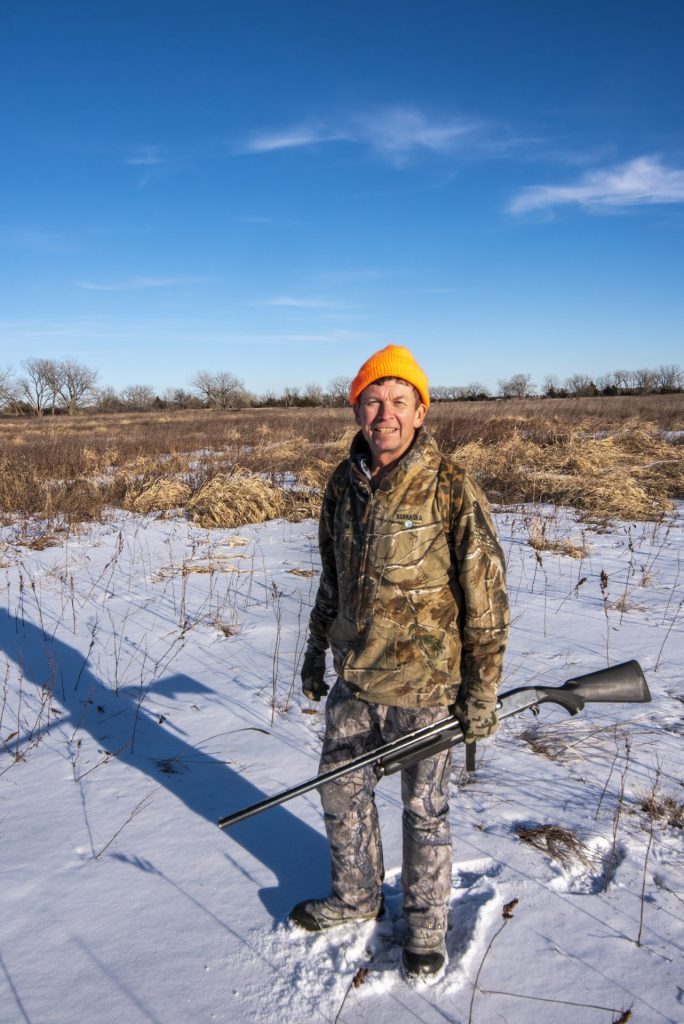
Meduna has been a wildlife biologist with the Nebraska Game and Parks Commission for 42 years and has worked at Sac-Wilcox and the Kearney office the entire time. To call him an avid hunter is an understatement.
The walls of his house are adorned with trophies from hunts in the western United States and Africa, many of the mounts and rugs prepared by his own hands. He pursues both big and small game in his home state with equal passion.
Because neither Meduna nor I now owns a hunting dog, we had hoped for a few inches of snow cover to allow tracking of the birds. The previous day, however, was warm, and the snow had become patchy. Tracking would be challenging.
With pheasants on our minds, we set off into the marsh zig-zagging among the stands of smartweeds, rushes and giant ragweed. Meduna moved slowly, head down, searching for tracks. When on a trail, however, his pace quickened, and he sometimes ventured off a few hundred yards in pursuit. Once, when our paths re-joined, he whispered one of his many pheasant hunting wisdoms: “You’ve got to trail birds fast. Sometimes I will even run. It wears them out and they will hole up in cover.”
About an hour into the hunt, we crossed the trail of two walking roosters. We followed. After about 10 minutes, the tracks entered a patch of thick cover and we prepared for a flush.
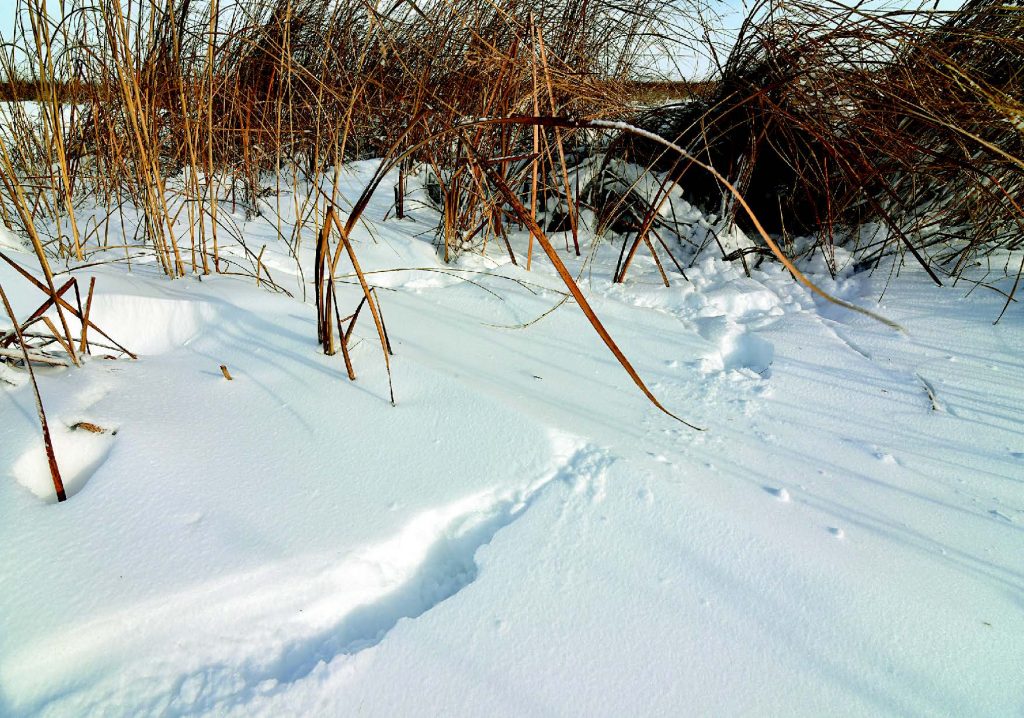
Hoping to capture a photo of Meduna shooting, I set my gun down and took out my camera. Soon after – you guessed it – the birds flushed right in front of me. Flustered, I missed my photo as Meduna dropped the second rooster. We ran to the spot, but found no bird. It had run or buried itself in nearby cover.
For 20 minutes we stomped about looking for the downed bird. We followed a set of tracks leaving the area, but they vanished in a patch of wet grass. Reluctantly, we gave up the search and continued hunting until sunset.
Pheasant tracks were fairly common that day. We flushed about 15 hens and saw the tracks of a few other long-striding, well-educated roosters, but could not flush them. A dog would have been advantageous on this day with patchy snow. Though we harvested no birds, it was a fun day, and hunting with Meduna taught me a few new tricks of the pheasant hunting trade.
Winter Cover
As winter descends upon the Plains, breathing wind, snow and cold upon the land, pheasants leave lighter fall cover and head for the thick stuff. In Nebraska, this is mainly dense grass or marshes. Radio tracking studies have shown pheasants will travel up to 10 miles from their normal home range to winter cover, though most likely travel only a few miles or less. For them, finding heavy vegetation that provides thermal insulation on cold winter nights and shelter from the wind and snow, which can bury or suffocate birds if caught in the open, is a matter of life and death.
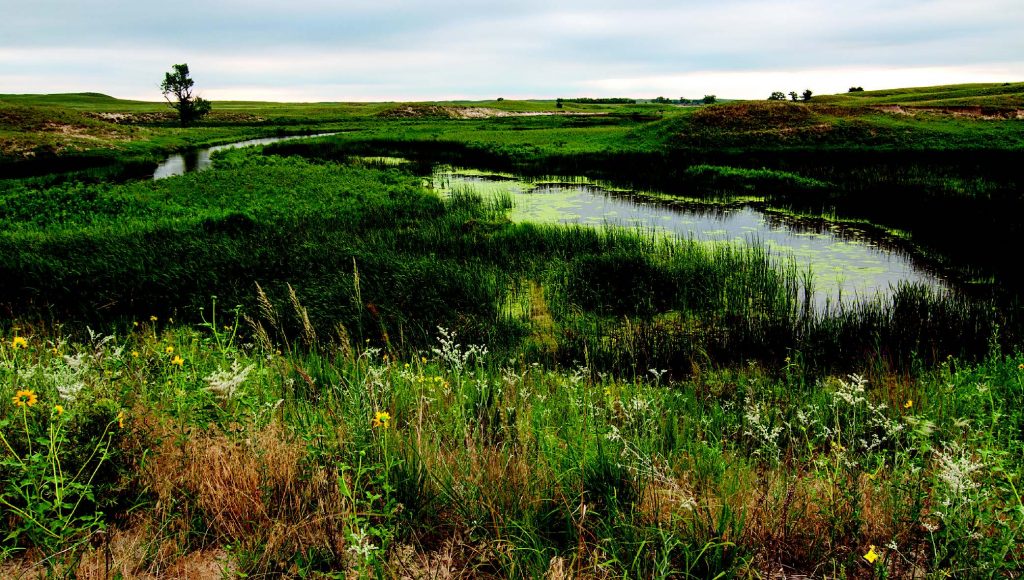
“Over the last few decades as we have lost more old farmsteads, pastures and Conservation Reserve Program fields to the plow, the un-farmable marshes have become even more vital pheasant habitat,” Meduna said. “Here in farm country, they are especially important as winter cover as crops have been harvested, pastures grazed short and snow has buried lighter grass cover making these other habitats useless.”
In Rainwater Basin wetlands, cattails, river bulrush, prairie cordgrass and tall patches of giant ragweed and sunflowers provide the best winter cover for pheasants. “These plants are tough, and when snow-covered they stay standing throughout winter,” Meduna said. “Even when buried deep in snow, the cattails and bulrushes have open space below where birds can burrow into for warmth.”
Mel Nenneman, a wildlife biologist for 17 years at the Valentine National Wildlife Refuge (NWR) in Cherry County, confirmed the value of marshes as winter habitat for pheasants in the Sandhills. “In late fall and early winter, the birds will roost about anywhere on the refuge,” he said. “They will hunker down in tall grass up on the dunes or in the wet meadows bordering the marshes. But when the weather gets cold, they move into the marshes.”
Before the wetlands freeze over, pheasants will roost on clumps of vegetation standing above the water where they are safe from mammalian predators. But when the wetlands ice-over, “they like to roost in the hardstem bulrush patches as these have openings that they can drop into [when flying in to roost],” Nenneman said. “When the weather gets really gnarly, they move to the cattails. They don’t seem to like patches of common reed. These are so tall and dense it hinders their flushing [escape] when the coyotes start running the marshes. Pheasants even seem to avoid the overly dense, jack-strawed cattail and bulrush stands, except around their more open edges.”
Even in tough years, when blowing snow has filled most of the marshes, Nenneman said there are always patches of open cover where birds can find shelter from storms. Without the marshes as winter cover, he doubts pheasants could survive in the expansive, prairie-covered Sandhills. “McKelvie National Forest [also located in the Cherry County Sandhills] has few marshes and far fewer pheasants than the refuge,” Nenneman said.
Winter Food
To survive winter’s chill, pheasants must lose body heat at a slower rate than they produce it. Although cover is key to pheasants staying warm, they also need food to survive. In our region, pheasants require one-third more energy in December than in October, and with shorter winter days, they have less time to forage.
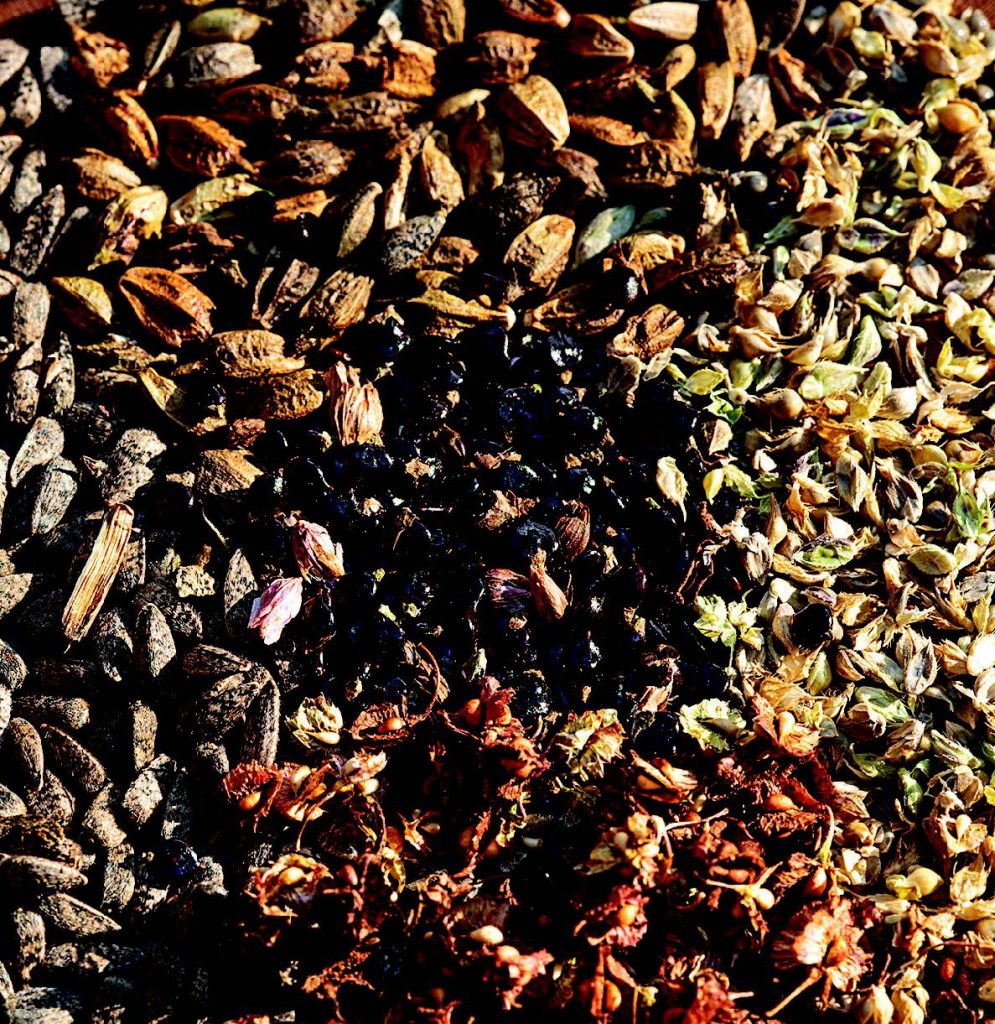
In fall and early winter, pheasants feed heavily on grains and other seeds to build fat reserves in preparation for the coming cold. During blizzards, they can hunker down in thick cover and survive on fat for several days without eating. Pheasants can lose 40 percent of their body weight before succumbing to starvation, and even in severe winters few die this way.
Most winter mortality occurs when birds are flushed from cover or leave voluntarily to feed and die from exposure or predation. Having a food source close to winter cover is advantageous, as pheasants burn less energy traveling to the food and are exposed for shorter periods of time while feeding.
In farm country, grains, especially corn and soybeans, are a prime winter food for pheasants. Soybeans, however, contain digestive inhibitors that restrict their food value
to birds. Pheasants seem aware of this and preferably winter in marshes adjacent to cornfields rather than soybean fields.
The seeds of marsh plants are also an important winter food. Many a hunter has found pheasant crops packed with the large and energy-rich seeds of barnyard grasses, giant ragweed, sunflowers, docks, smartweeds and other marsh plants. In the Sandhills, where crops are limited, pheasants survive winter solely on the nourishment provided by wetland and prairie plants.
“In dry years, before the marshes freeze, pheasants will forage on the exposed shorelines and mudflats. Often they scratch up and eat these fingernail-sized white tubers,” Nenneman said. “I am not sure what plant they are from. They also go after the energy-rich seeds of annuals, such as barnyard grass and smartweeds, which grow on the mudflats and shorelines as water levels recede in summer.”
Under the right conditions, and if the other birds don’t get it all first, they will eat the grains of wild rice that grows in some of our marshes.
Nenneman explained that in wet years, when the marshes have deep water and few exposed mudflats to produce annuals, pheasants are forced to forage up in the dunes on the seeds and fruits of sunflowers, prairie rose, western snowberry and other prairie wildflowers. “It is harder for a hunter to locate the birds when they are spread out foraging on the dunes,” Nenneman said.
Sandhills Marsh Hunt
The 72,000-acre Valentine NWR offers some of the Midwest’s most scenic and remote upland game bird hunting. “On opening weekend we get a fair number of hunters, but only light to moderate pressure most of the season,” Nenneman said. The refuge has provided some of my most memorable bird hunts, and a 2005 hunt stands out.
Referring to my hunting journal, on that warm, sunny November morning, Callie, my Welsh Corgi, and I set out from the parking lot north of West Long Lake. We headed southeast toward our goal, the south side of Dad’s Lake where the grassy dune rises high above the four mile-long lake.
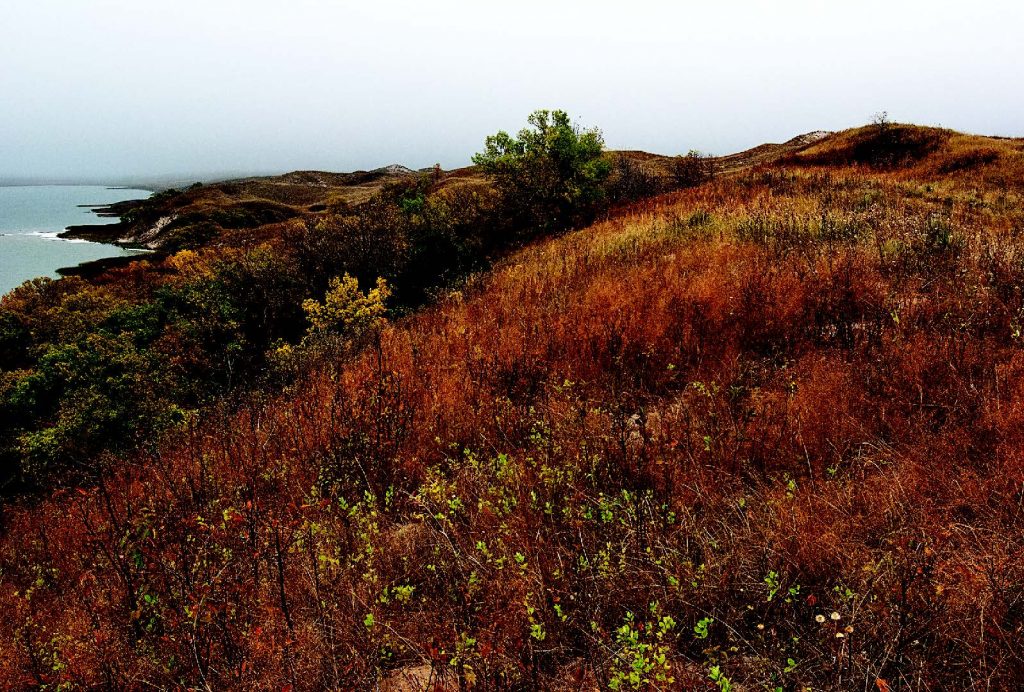
Arriving at the west end of Dad’s, we pushed into the narrow band of marsh that forms its shoreline, the perfect width for a lone hunter and dog. Almost immediately, from the tall rushes we flushed about 15 pheasants that scattered onto the dune and into the marsh ahead.
Soon, more birds broke from cover, and I watched one rooster land in a mid-slope plum thicket. We followed, and Callie soon had her nose to the ground, hot on its trail. The chase lasted about 100 yards before the bird took flight and was in the bag.
We continued east for a couple miles, staying low on the dunes, hitting plum thickets and pushing a few wild birds. We stopped for lunch, and after my dry bagel was washed down with water, we walked the shoreline back west. Right off the bat, we flushed a group of about 10 pheasants, and I dropped one. After a while, I tired of trudging through the marsh and headed up onto the easier-to-walk dunes. Nearing the lake’s west end, still a bird shy of my limit, a rooster burst from a thicket, flew low, and just as it was about to crest a ridge to safety, I dropped it.
But my hunt was not yet done. While crossing the dune north of Dad’s Lake, I busted a covey of sharp-tailed grouse, and ended up bagging three. The last mile of my hike back to the car was rather draining with six birds in my vest, but I was satisfied.
Nebraska marshes furnish pheasants with shelter, warmth and food during the stressful cold of winter. And for hunters, they provide many memorable moments. ■
Marsh Management
Since European settlement, Nebraska has lost more than a million acres, or 35 percent, of its original wetlands to drainage, clearing and groundwater pumping. Some regions have suffered more than others. For example, the Rainwater Basin, once a mecca for pheasant hunters, has lost 90 percent of its wetlands, whereas the Sandhills has lost an estimated 15 to 45 percent of its wetlands to drainage and conversion to hay lands.
This loss makes conservation of remaining wetlands critical. Most conservationists agree that preserving and managing larger wetlands or wetland complexes is better for pheasants and other wildlife when compared to smaller wetlands.
Large wetlands provide more escape cover where pheasants can avoid hunters and predators. In addition, when a pheasant is flushed from a small marsh in winter, it will likely have to fly from the wetland into poorer cover, where it is exposed to predators and the elements. In large wetlands, a flushed bird is likely to stay in the marsh.
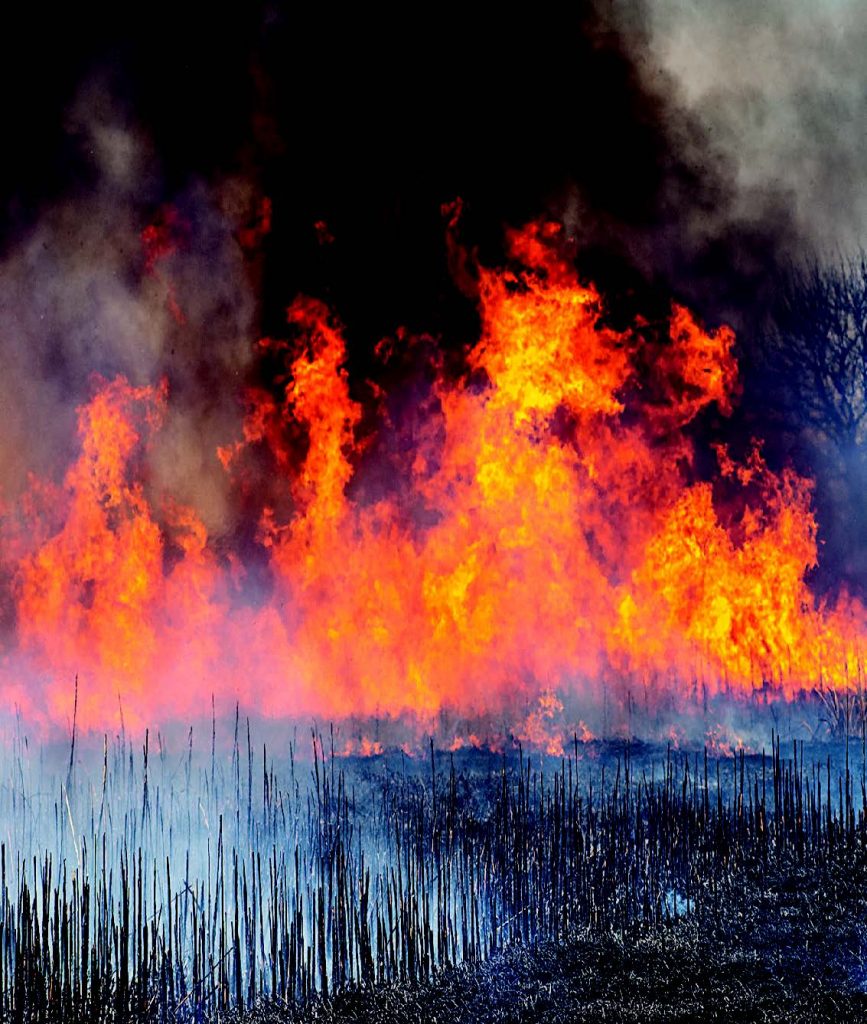
overly dense cattails and river bulrush. Photo by Gerry Steinauer.
“It is amazing how many pheasants we have most years at the 2,000-acre Funk WPA [Waterfowl Production Area located in Phelps County],” said Brad Krohn, project leader for the United States Fish and Wildlife Service’s Rainwater Basin Wetland Management District. “The area’s size allows us to create the diversity of habitats, in the wetland and surrounding grasslands, that pheasants require,” Krohn said. Though pheasants need dense cover for wintering, they prefer moderately dense cover for nesting and even more open cover for brood rearing where the chicks can move about and forage for insects. “We use a combination of prescribed fire, livestock grazing, haying and idling land to provide these habitats. And we try to do something different annually in each area,” Krohn said. Prescribed fire and grazing in the wetlands also stimulates seed-producing annuals used by both pheasants and waterfowl.
Nebraska wetlands are critical habitat for migratory waterbirds including seven to nine million ducks that stop annually at the Rainwater Basin, and many public wetlands are managed to benefit these species. And therein lies the rub: geese, ducks and shorebirds prefer shallow, open-water marshes wit exposed mudflats for feeding, with limited dense, protective cover. On the other hand, pheasants benefit mostly from wetlands with extensive dense winter cover. Adding to the dilemma, several of the marsh plants that provide dense cover, such as narrow-leaf cattail, are colony forming, non-natives that displace native vegetation.
Hunters are often opinionated on the matter, lobbying for habitats that most benefit the species they pursue. The mangers are often stuck in the middle of this debate. Most find a compromising solution, providing substantial waterbird habitat, but leaving enough dense cover to keep pheasants and pheasant hunters happy.
Tracking Tips
Meduna favors hunting marsh pheasants in January. By then, the birds are concentrated, wetlands are iced-over and accessible and most other hunters, his competition, have put away their guns for the season. “Hunting is ideal with about three to five inches of fresh snow, which makes for great tracking conditions,” Meduna said. “With more snow, hunting can be a lot of work, and with less snow, tracking can be difficult.”
With fresh snow, Meduna will hunt any time of day. If the snow is old, however, he prefers to hunt in the afternoon on sunny days. Letting the sun melt away old tracks, he can concentrate solely on fresh tracks that may end in a flush. Also, on nice afternoons he often finds pheasants loafing in cover next to weed patches or crops, and these birds are less spooky than when actively feeding.
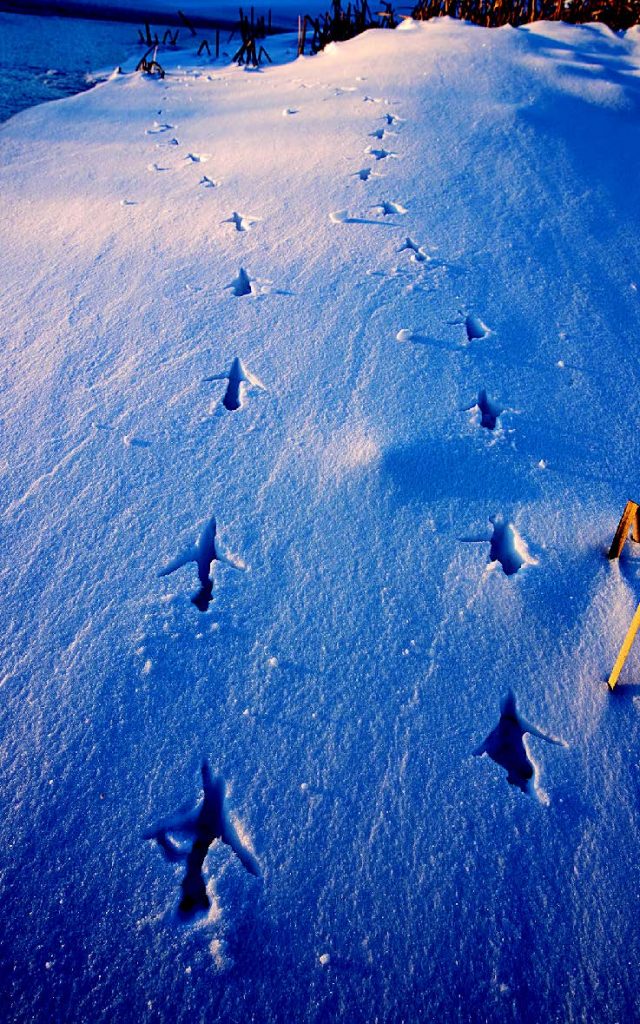
When tracking birds in snow, Meduna prefers to hunt alone. “It’s too hard to coordinate with more than one person when tracking, and one person can keep quiet,” he said. “Stealth is key to pheasant hunting. When tracking birds, you learn just how smart pheasants are. Nearly every bird you flush has run some, moving from the spot where they first realize someone is after them. Big groups of hunters, or those making noise, push the birds ahead, often flushing them out of range. When hunting quiet, birds will hold better.”
Meduna also uses strategy when tracking pheasants. For example, he will often walk through dense cover “to push the birds out,” then moves over a 100 yards or so and walks it back in the opposite direction to pick up the fresh tracks of birds he sent running. He also watches where flushed roosters land and moves quickly to the spot. “The second time they are pursued they will run less before flushing again, and the third time even less,” he said. “Pheasants lack the muscle strength for long flights. Basically you can wear them down and eventually get close for a shot.” In addition, he can distinguish rooster tracks from hen tracks: the former are larger and more widely spaced when a bird is running, and he wastes no time trailing the latter.
The lean Meduna strongly recommends being in shape if planning to chase marsh pheasants. “Most hunters avoid the dense cover because it is too difficult to walk, but that’s often where the birds are,” he said. To ready himself for the hunting season, Meduna runs once or twice a week during the summer.
As fall and big game seasons approach, he walks two miles three times a week carrying a backpack filled with 50 pounds of lead shot. As a final hunting tip, Meduna emphasized not giving up on hunting in late winter. “I always try to hunt on the last day of the season just to show that the public marshes still hold birds,” he said. “A few
of those days I have even gotten my limit.”
The post Marshes: A Winter Refuge for Pheasants appeared first on Nebraskaland Magazine.

